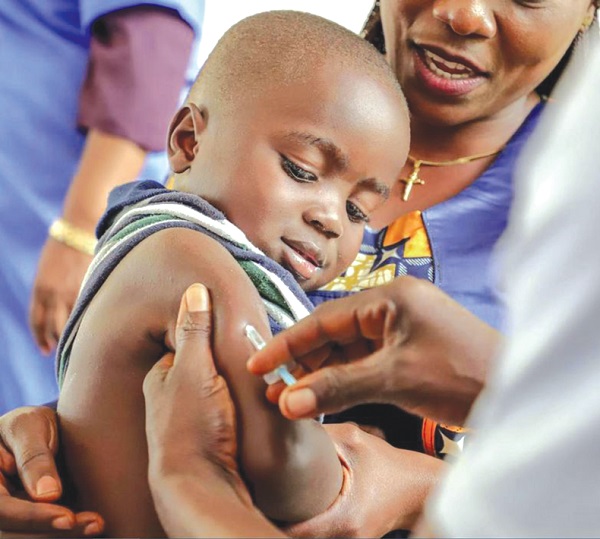
Remarkable returns of vaccinating children
VACCINATION is one of the true wonders of humanity, having saved more lives than any other medical invention and providing population-level control of diseases that once ran rampant.
Advertisement
Yet, we often fail to appreciate how fundamentally they have changed human life for the better.
At the turn of the last century, infectious diseases caused more than one-third of all deaths in the USA, killing a greater proportion of people than cancer and heart disease do today.
Today, vaccines have made common diseases such as diphtheria, typhoid, measles and whooping cough virtually extinct.
Every year through the 20th century, they made more than a million Americans sick.
Today, that number has dropped by 98 per cent.
This picture is even more dramatic if we look at the poorer parts of the world. Smallpox was one of the world’s most serious infectious diseases, killing indiscriminately for millennia, before being finally eradicated in 1977 thanks to a vaccine.
It killed some 300 million people over the 20th century, and without the vaccine, just this one disease might still kill five million people each year.
Just measuring the currently dangerous infectious diseases, it is estimated global vaccinations are saving at least 3.8 million lives every year.
Millions
And yet, every year, millions of children in the poorer parts of the world still go without vaccines.
This situation was exacerbated by the COVID-19 pandemic that strained health systems and caused 25 million children to miss out on some or all of their vaccinations in 2021.
That was 5.9 million more than in 2019 and the highest number since 2009. Ghana laudably withstood the trend.
Despite a small drop in vaccinations during the first year of the pandemic, the country even increased its impressive childhood vaccination coverage from 97 per cent in 2019 to 98 per cent in 2021.
Potential
Unfortunately, recession, inflation, and many other global challenges caused many other countries around the world to lose focus on the huge potential that vaccines offer.
Global leaders from around the world promised in 2015 to dramatically reduce child deaths by 2030, as part of the Sustainable Development Goals (SDGs).
This can only be achieved if we manage to ensure that all vaccine-preventable diseases are under control.
Unfortunately, there are far too many different promises in the SDGs –169 targets.
There is little difference between having 169 priorities and having none.
The SDGs have placed core targets, such as increased vaccination, the eradication of infant mortality, and the provision of basic education on the same footing as well-intentioned, but more peripheral targets, such as boosting recycling and promoting lifestyles in harmony with nature.
Because the SDGs promise too much, we are failing to achieve any of the promises.
This year marks halftime for the SDGs, yet we are nowhere near halfway.
On the current trajectory (and not including the backsliding during COVID), we will achieve the SDG promise on vaccines more than half a century late.
Prioritise
We need to identify and prioritise our most crucial goals. My think tank, the Copenhagen Consensus, together with several Nobel laureates and more than a hundred leading economists, has done exactly that: We have identified where each cedi can make the largest impact.
Researchers from Johns Hopkins University and the International Vaccine Access Center (IVAC) have documented both the costs and the benefits of increasing the global investment in vaccinations.
If we continue with our current level of spending, we will continue to save 3.8 million lives from avoidable diseases between now and 2030.
But if we were to increase that coverage just slightly, nudging it upwards as has happened consistently over the past decades, things would get even better.
Over the next eight years from 2023 to 2030, we could save an additional 4.1 million lives.
This would have real costs. As we expand vaccination campaigns to harder-to-reach places and to families who have so far not engaged with vaccination campaigns, the costs climb.
It may be necessary to copy the example of India, which uses food incentives and vaccination ‘camps’ to ensure greater coverage.
Yet, the additional financial cost will still be a relatively modest US$1.5 billion extra per year along with about $200 million in additional time costs.
Saving half a million lives each year makes this an incredible opportunity.
Using standard economic evaluations across time and considering that avoided impacts closer to now are more important, such a benefit is worth about $170 billion annually.
That means that each dollar spent will generate $101 of social benefits.
Achieving a 100-to-1 value for money is an absolutely phenomenal return on a policy to increase global vaccination.
Of all the hundreds of promises that the world has made in the SDGs most of which will never be delivered a few stand out for their incredible effectiveness.
Increased vaccination is clearly one of these policies.
If we want to achieve maximal good for the world, we absolutely must step up and ensure that resources are allocated to increase vaccinations.
The writer is the President of the Copenhagen Consensus/Visiting Fellow at Stanford University's Hoover Institution.




